
The Albert Memorial, directly north of the Royal Albert Hall in Kensington Gardens, London, was commissioned by Queen Victoria in memory of her beloved husband Prince Albert, who died in 1861. Designed by Sir George Gilbert Scott in the Gothic Revival style, it takes the form of an ornate canopy or pavilion 176 feet (54 m) tall, in the style of a Gothic ciborium over the high altar of a church, sheltering a statue of the prince facing south. It took over ten years to complete, the £120,000 cost met by public subscription.

Henri-Michel-Antoine Chapu was a French sculptor in a modified Neoclassical tradition who was known for his use of allegory in his work.

Cyrus Edwin Dallin was an American sculptor best known for his depictions of Native Americans. He created more than 260 works, including the Equestrian Statue of Paul Revere in Boston; the Angel Moroni atop Salt Lake Temple in Salt Lake City; and Appeal to the Great Spirit (1908), at the Museum of Fine Arts, Boston. He was also an accomplished painter and an Olympic archer.

Charles Henry Niehaus was an American sculptor.
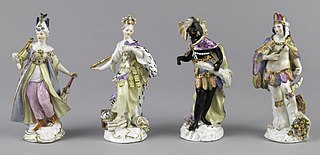
Personification is the representation of a thing or abstraction as a person. In the arts, many things are commonly personified. These include numerous types of places, especially cities, countries, and continents, elements of the natural world such as the months or four seasons, four elements, four cardinal winds, five senses, and abstractions such as virtues, especially the four cardinal virtues and seven deadly sins, the nine Muses, or death.

Robert Ingersoll Aitken was an American sculptor. Perhaps his most famous work is the West Pediment of the United States Supreme Court Building.
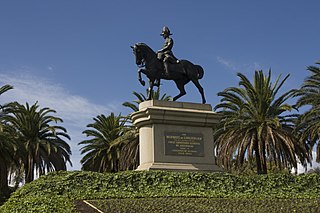
William Birnie Rhind RSA (1853–1933) was a Scottish sculptor.
Edward Alfred Briscoe Drury was a British architectural sculptor and artist active in the New Sculpture movement. During a long career Drury created a great number of decorative figures such as busts and statuettes plus larger monuments, war memorials, statues of royalty and architectural pieces. During the opening years of the 20th-century he was among the foremost architectural sculptors active in Britain and in that period created the series of works in central London for which he is perhaps now best known. These include the figures on the Old War Office building in Whitehall, elements of the facade of the Victoria and Albert Museum and four of the colossal statues on Vauxhall Bridge.
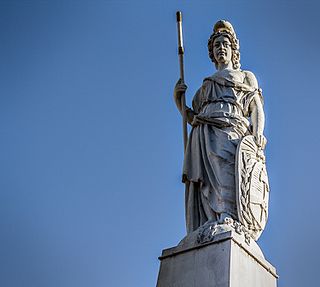
There are various allegorical representations of Argentina or associated in any way with Argentina. There is not, however, a national personification with its own name, like Marianne from France, or Hispania from Spain, but sculptures and engravings representing liberty, republic, motherland or other concepts that have been used officially by the Argentine state.
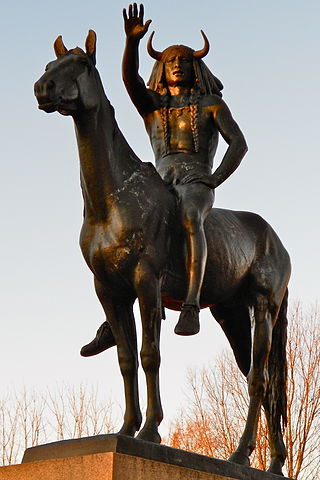
The Medicine Man is an 1899 bronze equestrian statue by Cyrus Edwin Dallin located on Dauphin Street, west of 33rd Street, in Fairmount Park in Philadelphia. The statue portrays an indigenous American medicine man.

A Signal of Peace is an 1890 bronze equestrian sculpture by Cyrus Edwin Dallin located in Lincoln Park, Chicago. Dallin created the work while studying in Paris and based the figure on a member of Buffalo Bill's Wild West Show, which he attended often. He exhibited the original plaster version of the sculpture at the Paris Salon of 1890, where it won honorable mention.

The Schiller Monument is located in central Berlin (Berlin-Mitte) on Gendarmenmarkt, in front of the flight of steps leading up to the former royal theater, today a concert hall. It honors the poet, philosopher and historian Friedrich Schiller, who is also regarded as one of the most significant dramatists and lyricists of the German language. The set of statues was executed by Reinhold Begas a prominent 19th-century German sculptor. It is a registered historic monument.

The Cyrus Dallin Art Museum (CDAM) in Arlington, Massachusetts, United States is dedicated to displaying the artworks and documentation of American sculptor, educator, and Indigenous rights activist Cyrus Dallin, who lived and worked in the town for over 40 years. He is well known for his sculptural works around the US including The Scout in Kansas City, Missouri, TheSoldiers' and Sailors' Monumentin Syracuse, New York and The Signal of Peace in Chicago. Locally, he is best known for his iconic Appeal to the Great Spirit and Paul Revere Monument statues, both located in Boston.
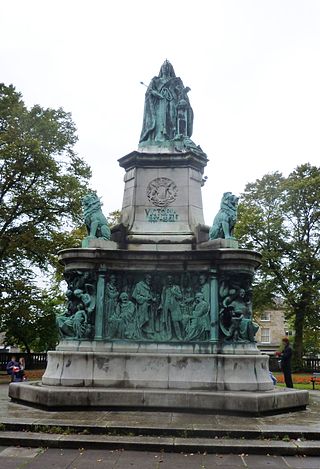
The Queen Victoria Memorial in Lancaster, Lancashire, England, is a Grade II* listed building. It stands in the centre of Dalton Square, Lancaster facing Lancaster Town Hall. It was erected in 1906, being commissioned and paid for by James Williamson, 1st Baron Ashton.

The Great Siege Monument, also known as the Monument to the Fallen of the Great Siege, is a monument commemorating the Great Siege of Malta located in Valletta, Malta. It consists of three bronze figures symbolizing Faith, Fortitude, and Civilization, standing on top of a granite base. The monument is the work of the sculptor Antonio Sciortino, and it was inaugurated on 8 May 1927.

General Winfield Scott Hancock (1913) is a sculpture by Cyrus E. Dallin on the east side of the Pennsylvania State Memorial in Gettysburg, Pennsylvania. Winfield Scott Hancock, a Union Army officer in the U.S. Civil War, is one of eight military figures depicted on the monument.

The Gladstone Memorial on the Strand, London is a bronze sculpture of the British statesman, created by Hamo Thornycroft between 1899-1905. The statue was erected as the national memorial to Gladstone and shows him in the robes of the Chancellor of the Exchequer. The figure stands on a plinth surrounded by allegorical figures depicting four of the Virtues, Courage, Brotherhood, Education and Aspiration. The memorial is a Grade II listed structure.

Alexander II is a monumental statue located at the Senate Square in central Helsinki, Finland.
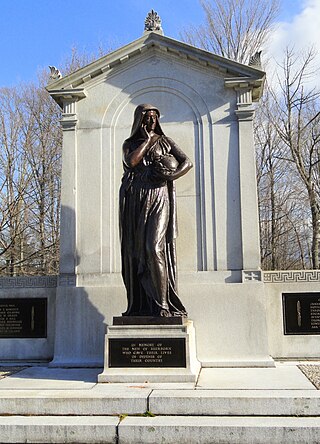
Memory (1924) is an 8-foot-tall bronze sculpture of a woman by Cyrus E. Dallin located in the Sherborn War Memorial in Sherborn, Massachusetts' Central Cemetery.


















